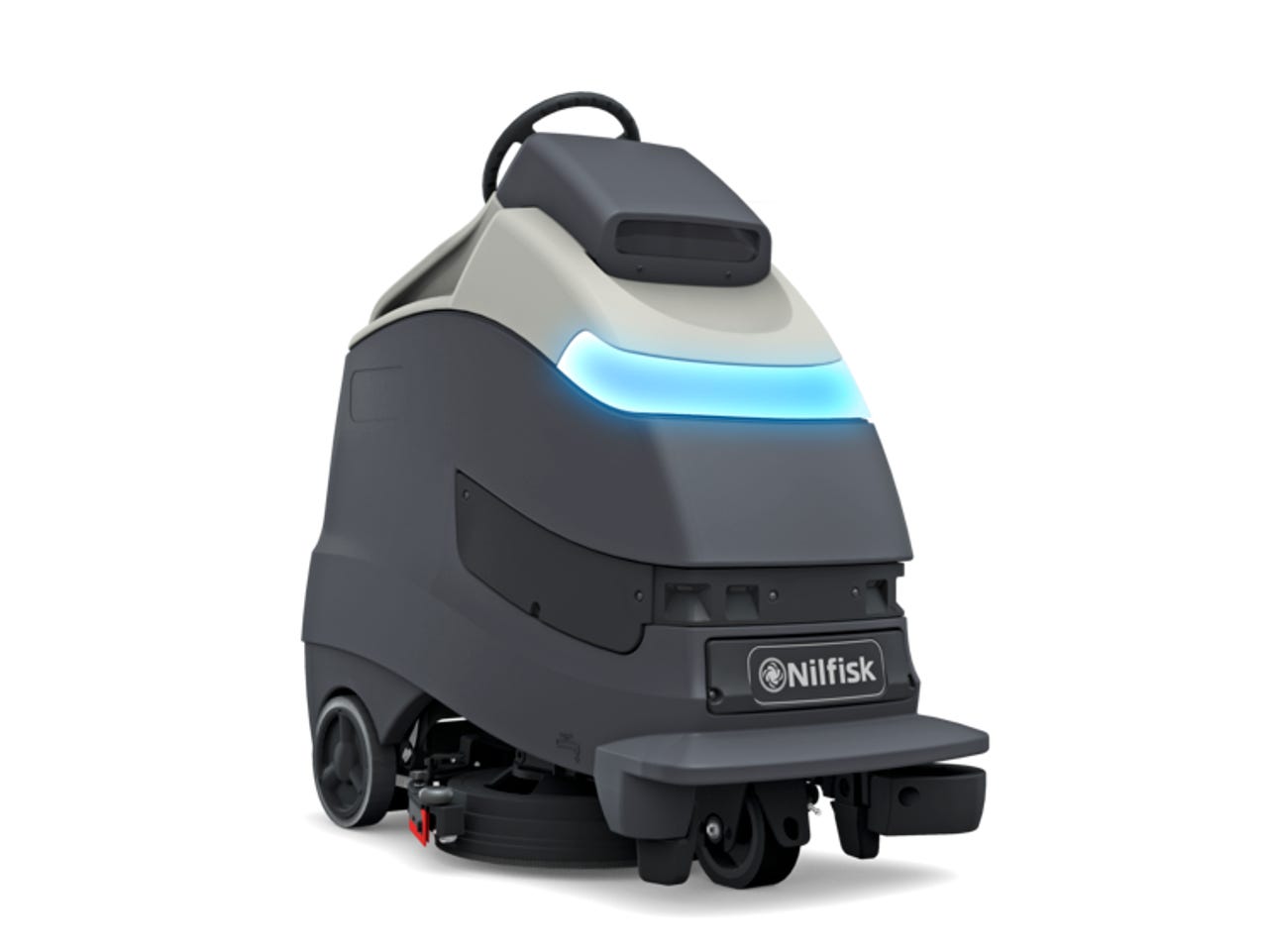Robotic cleaning: The next generation


Nilfisk plans to launch this autonomous floor cleaner in spring 2017. (Image: Nilfisk)
A 110-year-old cleaning equipment company has partnered with Carnegie Robotics to bring more intelligence to cleaning machines. Nilfisk, which is based in Denmark, announced a technology and innovation roadmap that includes robotic cleaners, but that's not all.
Anton Soerensen, Senior Vice President of R&D at Nilfisk, tells ZDNet, "The Horizon program is kind of a landing page for new innovation within autonomous cleaning, connected products, and intelligent cleaning methodologies. It's not only about autonomous cleaning, it's about the vision to change cleaning as we know it today."
Although Nilfisk offers consumer products, the focus of the new program is on tools for commercial cleaning. The company already offers a system called TrackClean, which monitors fleets of cleaning machines and transmits the data to users via a web portal. This way, instead of relying on employees to complete a cleaning checklist (think of the ones you see in public bathrooms, for example), managers can directly monitor the cleaning equipment. Beyond day-to-day tracking, the data can also be used to provide quality documentation and broader insights for cleaning contractors or the companies that hire them.
CES 2023
"Then you can go into more sophisticated ways of tracking, like sensors in the floor and sensors in the carpet," says Soerensen.
In places like hospitals, which have long hallways, self-driving cleaners are simply better than humans. "It's like going from welders in a car factory to robotic welders in a car factory," Soerensen says. He adds, "The autonomous machine is simply more precise, more consistent, and more efficient."
Autonomous cleaning machines have been on the market for several years, but in Spring 2017 Nilfisk plans to introduce the next generation. Older technology had trouble adapting to unstructured environments, but according to Soerensen, the new cleaners work well "even in spaces where people and things are around; even when things aren't in the same position today as they were yesterday."
Nevertheless, robots aren't about to replace janitors altogether. For now, at least, people will continue to do complex tasks such as cleaning an office filled with cubicle walls and wires. "You cannot find a device that is more flexible, more adaptable than a human being," says Soerensen.
He has noticed a shift in acceptance of autonomous technology during the last few years. At first, there were a few early adopters who understood the business case and wanted to be the first companies to use the latest technology. Then, he says, "As time passed by, with autonomous cars and just about any area hit with the autonomous wave, the customer base has gone beyond what we initially expected."
Rather than seeing the autonomous cleaning machines as replacements for humans, professional cleaners are starting to view robots as a functional tool that gives them a competitive advantage. Soerensen says there just aren't many job applicants lining up to stand behind a floor scrubber all day.
He explains, "The benefit of having a person sit on a machine for eight hours a day is not very great. But the benefit of having someone run a team, someone who can do more complex cleaning and maybe even extend the expectations of that contract they signed up, makes them just that much more competitive."
Nilfisk isn't ready to share any of the technical details about the intelligent cleaning program just yet, which is a sign perhaps that the technology is novel enough to change cleaning industry.